Violin Range vs Viola, Cello and Double Bass | Violin Lounge TV #538
What’s the playing range of the violin, it’s lowest note, highest note and all the possible notes?
Learn how the tuning and range of the violin compares to the viola, cello and double bass
In this video you’ll learn all about the violin playing range, positions and tuning. I will compare it to the piano to make things visual and also show it in the sheet music and on some handy downloadable PDF infographics.
Violin Tuning
The violin has four strings and is tuned in fifths: G D A and E. The G is just below the middle C of the piano.
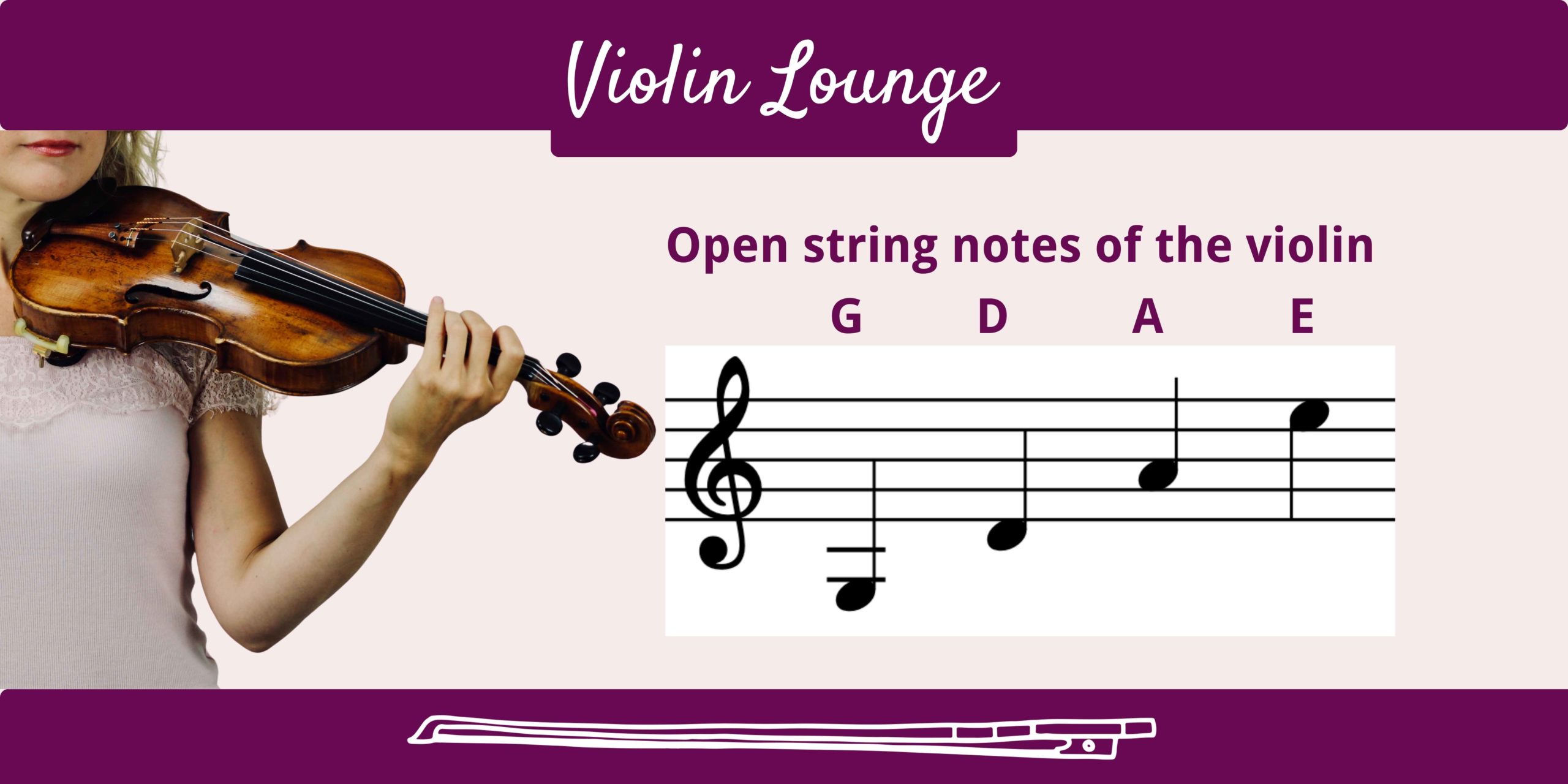
Lowest note on the violin
The lowest note of a stringed instrument is always the lowest sounding open string. When we put fingers on the string (stop the string) then the vibrating string length is shorter and the note sounds higher.
The lowest note on the violin is the open G string.
Position play on the violin
By stopping the string, which means to place fingers on the string, you make the string length shorter and the note sounds higher. The first position means that you place the index finger on the string so the pitch sounds a note (one tone, one step) higher than the open string. We are not confined to the first position. You can move your hand higher up the fingerboard and player higher notes. This is called position play.
All the notes on the violin
See this infographic of all the notes on the violin and download the high resolution PDF right here.
Violin string range
Using position play, so placing our fingers over the whole fingerboard and even beyond, we can play well over two octaves higher than the open string. The range of each violin string looks like this:
What’s the highest note on the violin
The violin can play three octaves above the open E string, which is the E8. To play this note one should place the finger so high that it’s beyond the fingerboard and more in the area where the bow touches the string. This is higher than the highest note on the piano. The sound of this note doesn’t really come out and isn’t used much in repertoire. Therefore, the standard answer to this question is the A7, which on most violins is about the end of the fingerboard. It’s a very high note, but it still sounds good and is used in repertoire.
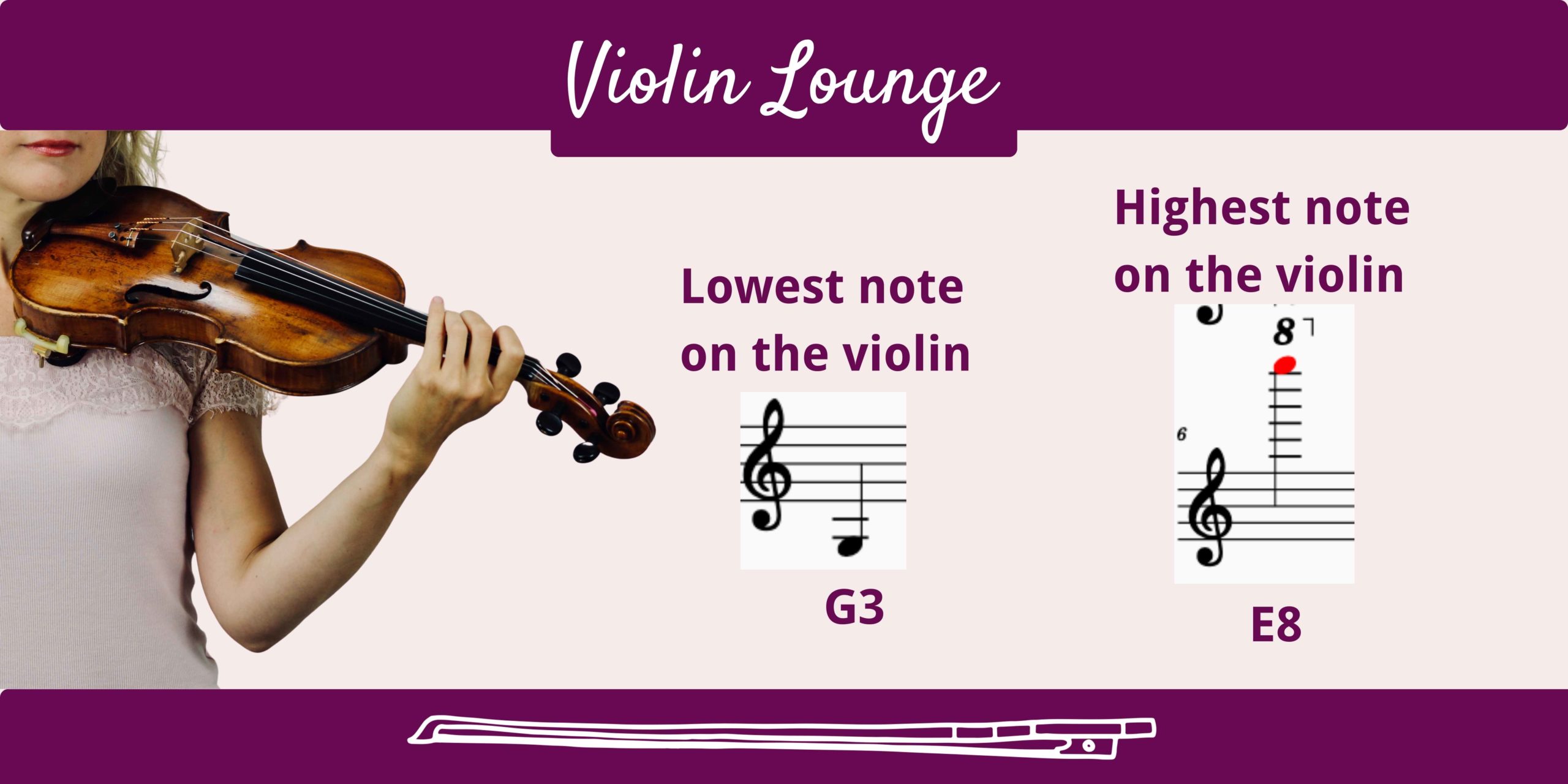
What’s the playing range of the violin family
Let’s take a look at the playing range of the violin vs the viola, cello and the double bass.
Orchestral strings range
A little side note here: officially the double bass is from the viol family, related to the viola da gamba, and note the violin family. Its shape is different, and it’s not tuned in fifths. However, because the double bass is part of the stringed instruments of a symphony orchestra, I’m including it here too.
Violin family range in the sheet music
This is the tuning and playing range of the violin, viola, cello and double bass in the sheet music. Please read the notes as ‘and on’, because the very high notes are not included otherwise this infographic wouldn’t be easy to read. I did include the playing range in the descriptions; however, this can be seen as a practical playing range and that of the viola, cello and double bass is quite conservative.
Viola tuning
The viola looks a lot like the violin and is played in the same position (under the chin), but sounds a fifth lower and is bigger. The G, D and A string have the same pitch as those of the violin.
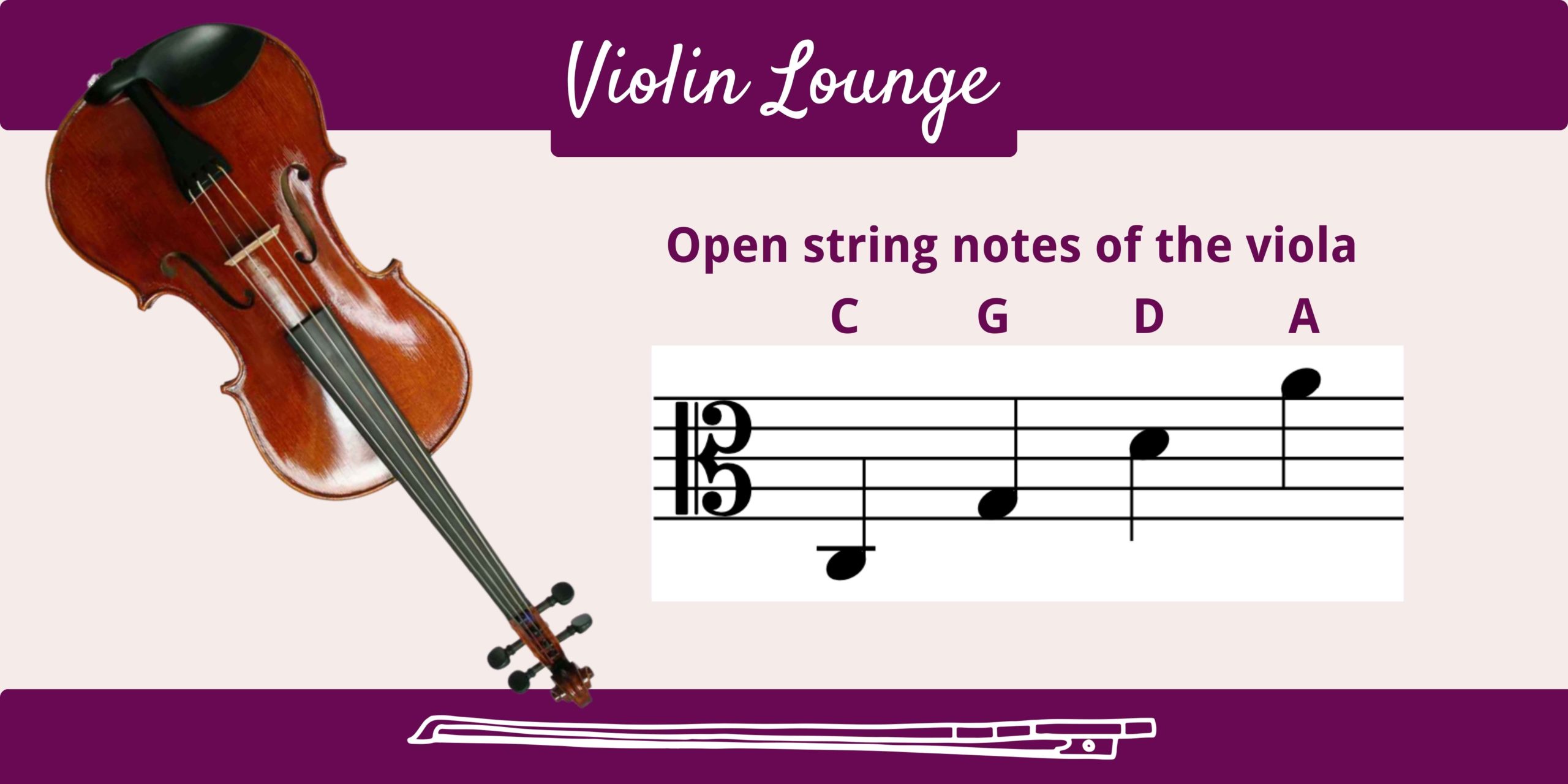
Cello tuning
The cello is tuned an octave lower than the viola. It’s a lot bigger and is played between the knees of the player and with its endpin resting on the floor.
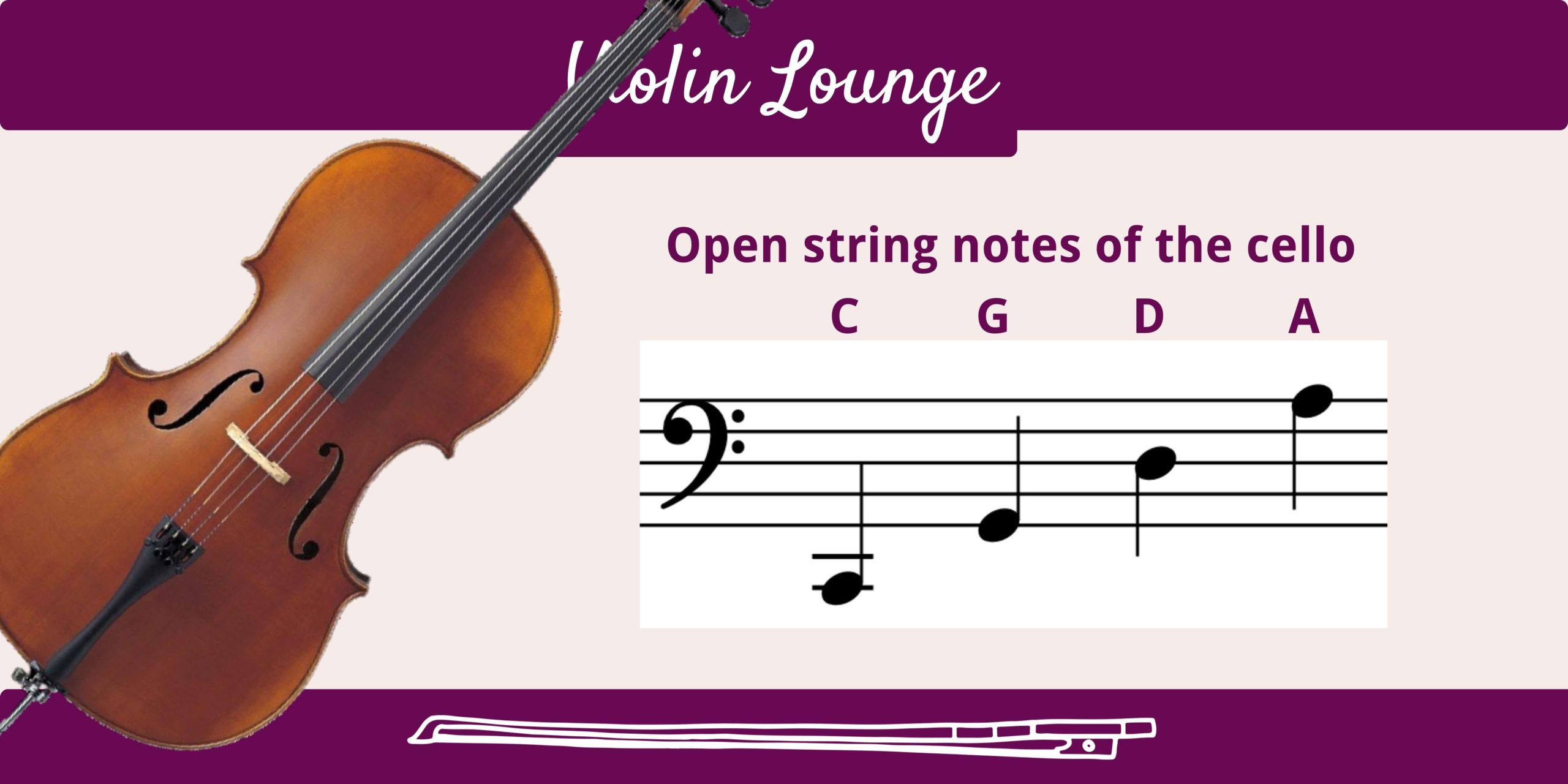
Double bass tuning
As I mentioned the origin of the double bass is different from the violin family (violin, viola and cello). The tuning of the double bass is a little less straight forward. The most common tuning if a four string double bass is E A D G, but often an extender is used, so that the double bass can play as low as the C1. Also some double basses are built or converted as a five string bass with a lower B0 string.
Please note that the notation of the double bass is an octave higher than it actually sounds.

Free PDF downloads of all infographics
Go here to download violin fingering charts and much more handy charts shown in this video.
Performances shown in this video
Violin
Paganini violin concerto no 1
Saint Saëns violin concerto no 3
Bruch violin concerto
Viola
Cello
Double bass
4 to 5 String Double Bass Conversion
Vaughan Williams Piano quintet in C minor
Czardas Monti for two double basses solo

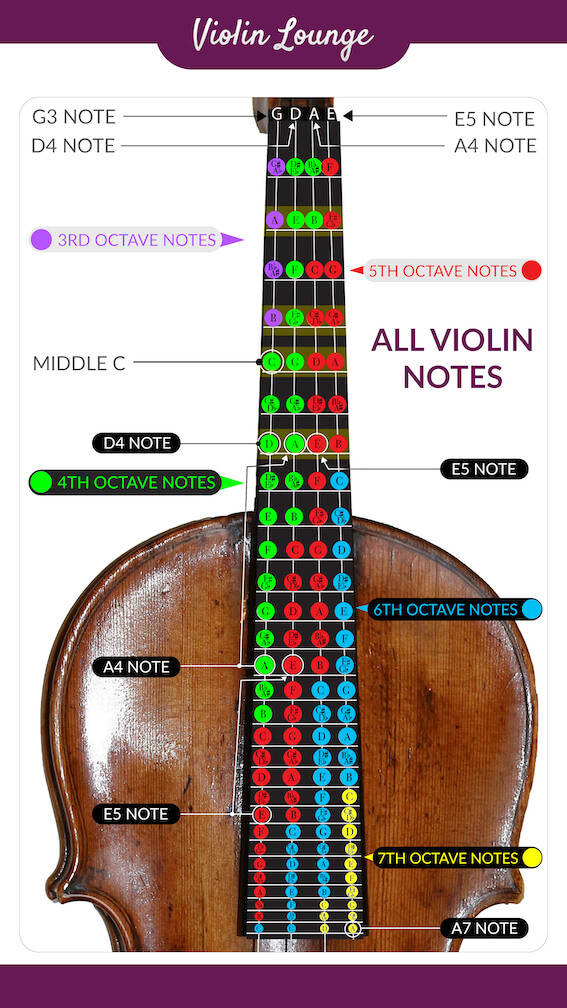
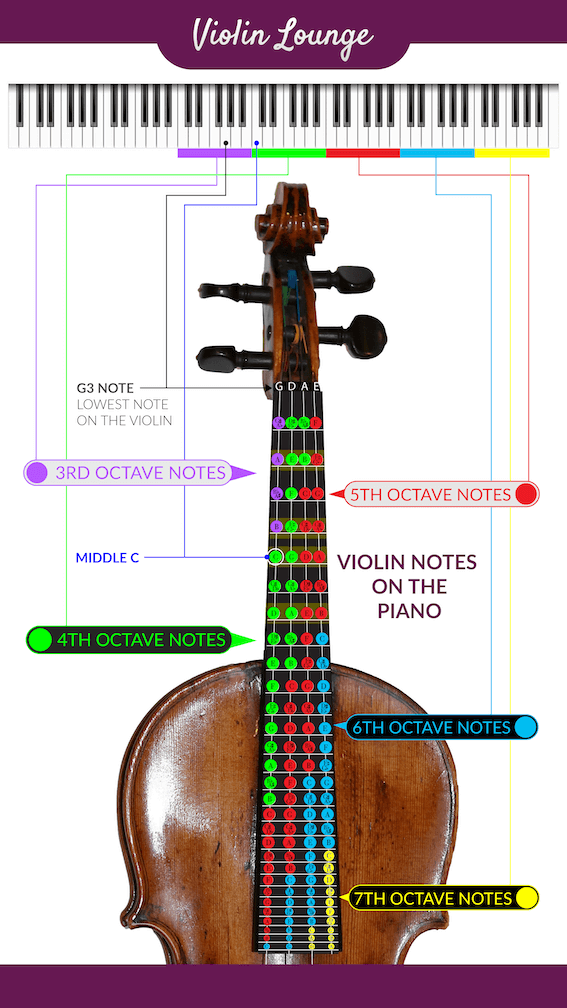
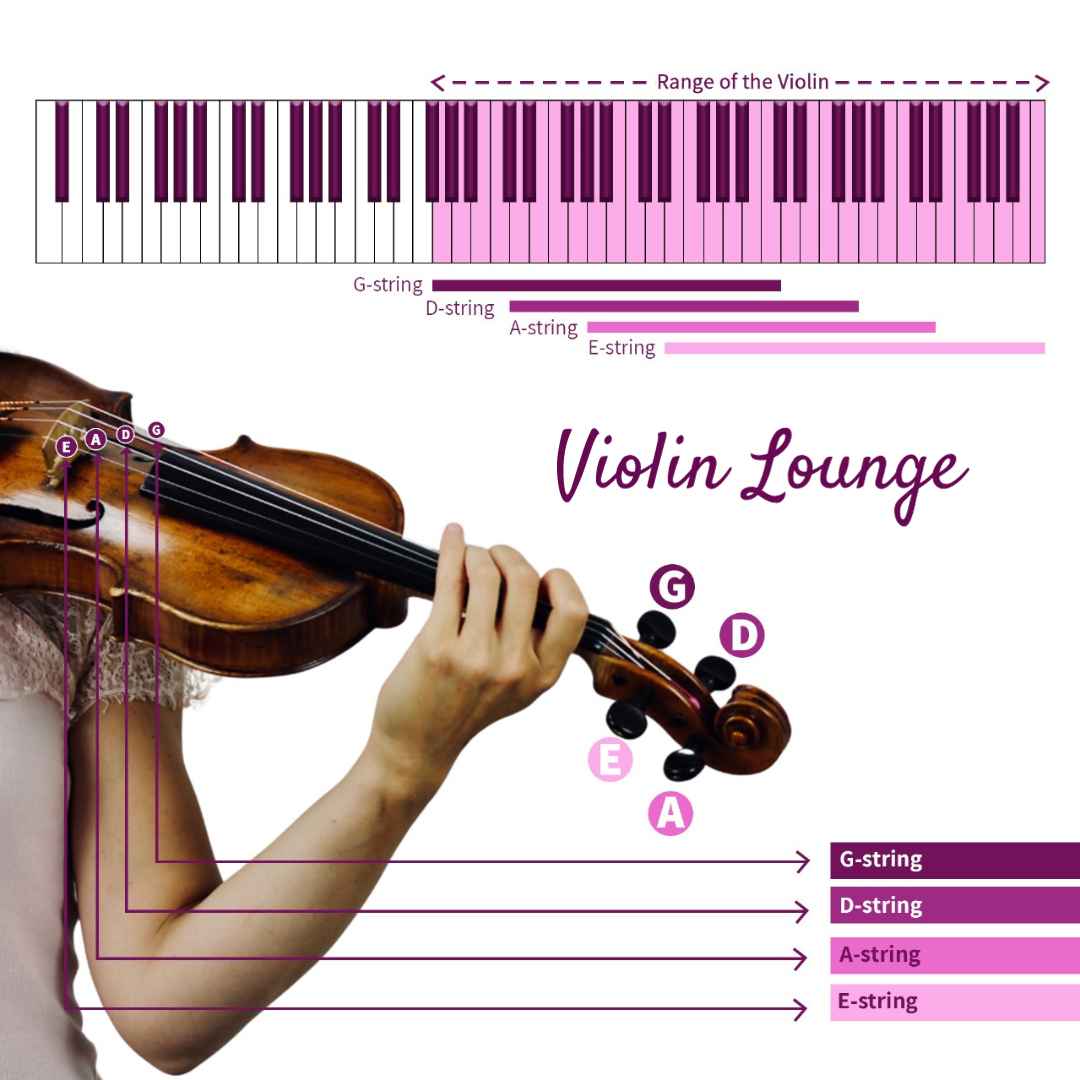
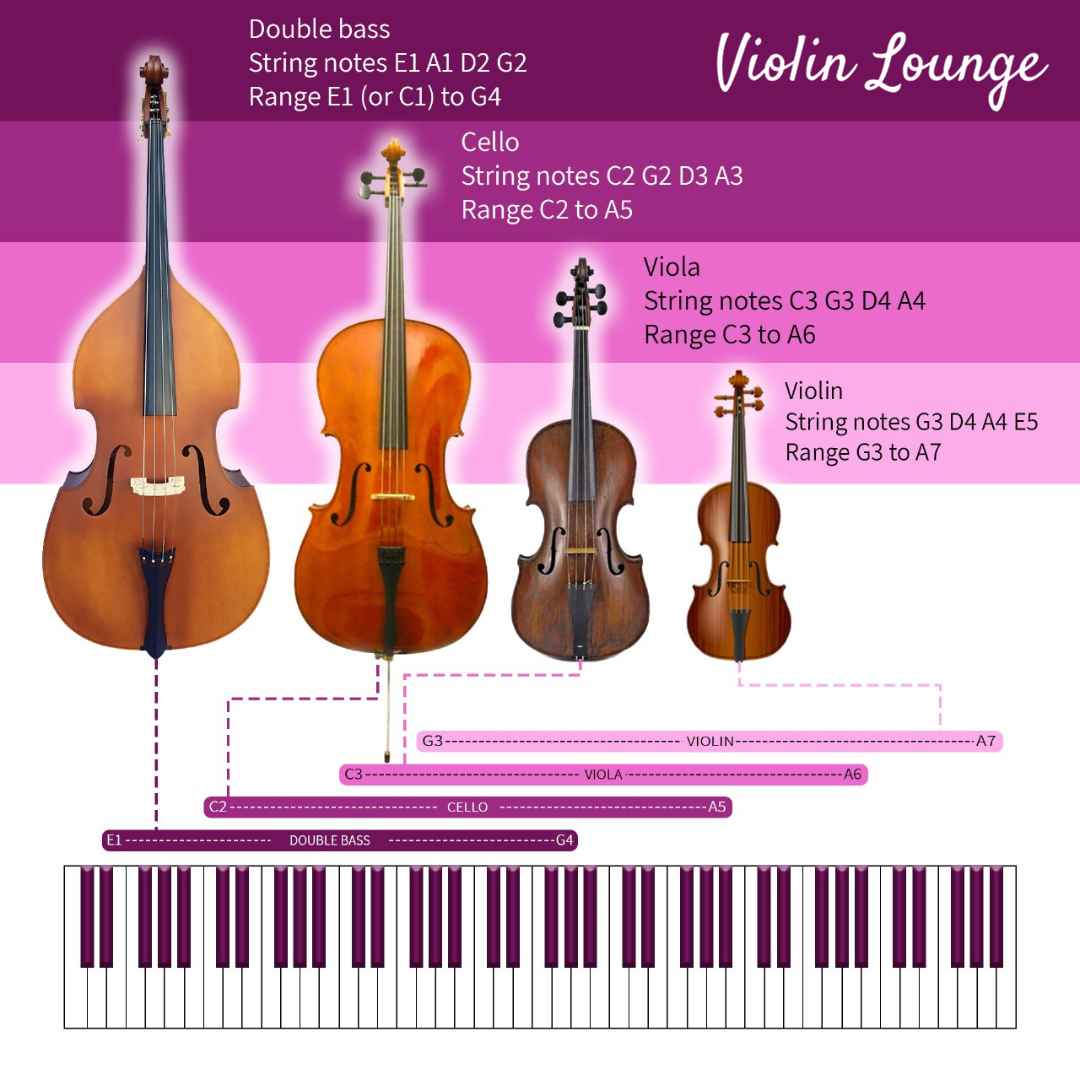
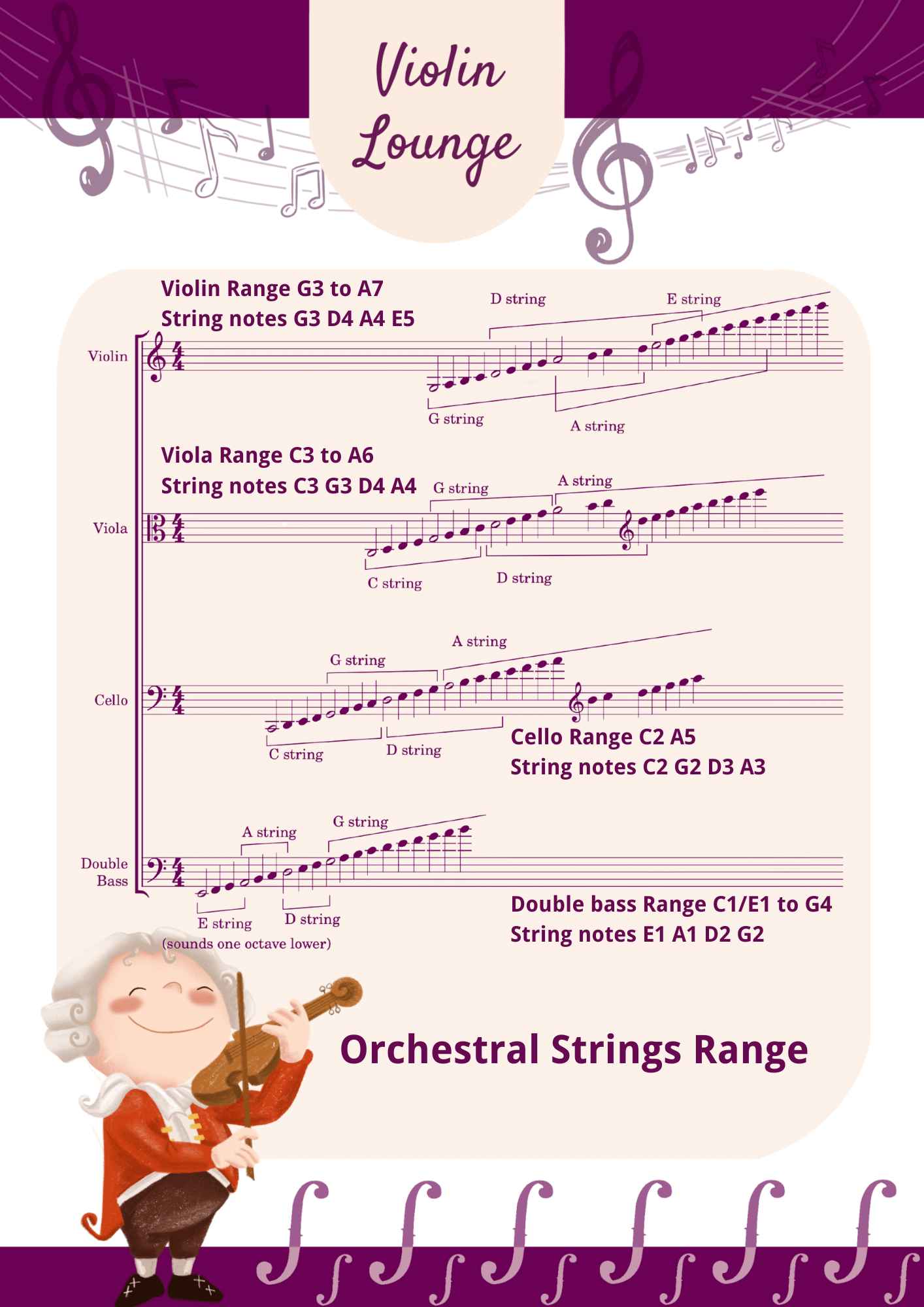
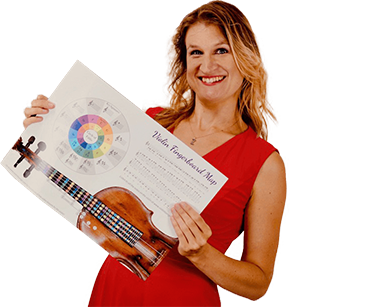
This website is very helpful, especially for “How to Blitz Grade 5 Musicianship” by Samantha Coates on page 7.